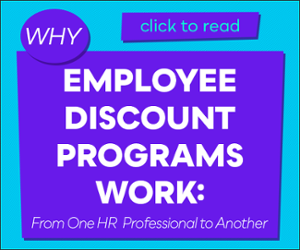We recently published a piece about how important it is for HR pros to be great communicators.
It’s a skill to be added to a growing pile. HR already has to deal with recruiting, training, policy-making, and all things benefits.
Well, maybe not all things benefits. HR pros have to know their stuff, but the burden isn’t entirely on them.
The burden of benefits knowledge falls on three parties, really: HR, employees, and vendors - your brokers, direct coverage providers, and other benefit providers.
HR (and management) should be experts on the various options across the entire benefits package.
Employees have a responsibility to learn those options, find the best options, and direct any questions to HR or, when appropriate, the vendors.
That’s right. Vendors have as much responsibility as HR and employees in making sure everyone gets the coverage they need.
Benefits partners need to be seen and felt as an extension of human resources. The Robin to your Batman, if you will.
And it’s up to all of us to hold them to their roles and responsiblities not just through open enrollment but all year, and within each claim filed, question asked, reimbursement submitted and everything else your employees encounter.
Benefits are challenging enough to navigate as it is.
Whether your benefits are handled entirely by a partner, or you’re dealing with individual vendors (such as Access Perks), the companies that handle your benefits are equal partners in making sure everyone is educated and receives the coverage that fits their needs.
What you put in front of employees matters.
As benefit costs rise (for employees), they’re naturally going to have higher expectations. People switch employers and careers over benefits. Great benefits have gone from a “nice to” to a “have to.”
Employees will never pay as close attention to their benefits as they should, of course.
But that doesn’t make them any less angry when they can’t get into their preferred physician.
It doesn’t mean they give you a pass when a prescription cost suddenly triples.
It’s unfair that disappointment usually reflects on the employer instead of the benefits partner. But it does, and little things that could cost you an employee could be solved by having a more responsible, responsive benefits partner.
What to Look for in a Great Benefits Partner
Employees are an asset. It’s hard to view people with such a de-humanizing term, but it doesn’t make them as individuals any less valuable.
But they’re your asset, and your responsibility. That means sourcing partners that care about them as much as you do, whether it’s a full-service partner or just a single-benefit vendor.
Look for these essential traits in a benefits partner or vendor:
- They take communication seriously
 So much success in HR is communication. Vendors should be willing to meet with you regularly for updates, as well as meeting with employees when needed. Major changes should be communicated clearly and well in advance. If possible, work with the vendor to set specific service level agreements (SLAs) on response times and resolutions.
So much success in HR is communication. Vendors should be willing to meet with you regularly for updates, as well as meeting with employees when needed. Major changes should be communicated clearly and well in advance. If possible, work with the vendor to set specific service level agreements (SLAs) on response times and resolutions.
- They understand generational needs
Chances are you have three, maybe even four distinct generations in your workplace. And obviously, they aren’t equal. Millennials aren’t as concerned with retirement or prostate screenings as their Boomer counterparts. A great benefits partner understands that each generation, and really each employee, has specific goals and boundaries, and can tailor their offerings to meet individual needs.
- They treat your employees as customers
Anyone who’s ever dealt with an unresponsive, or outright rude benefits partner knows how painful it can be when they don’t value your employees. It usually causes a line to form outside the HR offices. Partners need to value your employees like a good business values its customers. That means open lines of communication, human-to-human interaction, and clear explanations for negatives such as rejected reimbursement claims.
- They understand their role
Look, you can’t carry open enrollment all by yourself. Vendors need to be on call as much as you are during these stressful periods, not to mention flu season, or when an employee is hit with a major illness. This is part of treating employees like customers, but it’s especially important during times of high-volume or crisis.
Benefits partners have a responsibility to be an active participant in the benefits process.
Yet many of them act as if they can’t be bothered by what employers and employees may want.
Benefits costs are shooting up, employees are complaining, and everyone is looking to HR to make it right.
But you shouldn’t have to go it alone.
Push your vendors to become equal partners in helping employees get the coverage that fits their needs. Regularly reevaluate their performance, and set clear expectations. It’s more than just collecting utilization data and sharing it with you. It’s taking the data and finding win-win products, services, and rates that fit your particular needs.
It isn’t just about getting employees covered. The ramifications are much higher, and when employee engagement is on the line it means the very soul of your business is at stake.
What you place in front of employees on behalf of your company matters. Don’t let anyone take it lightly!




